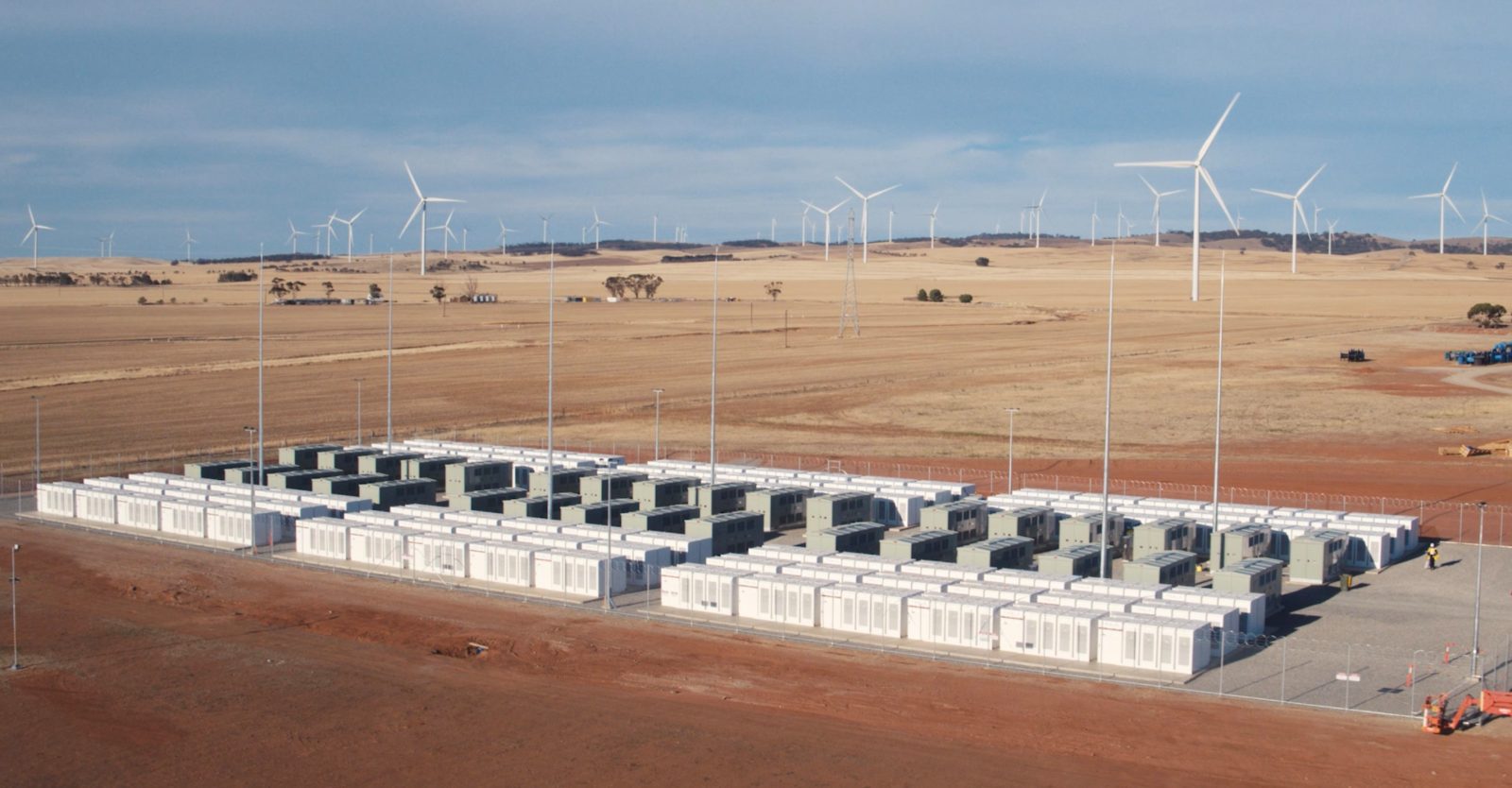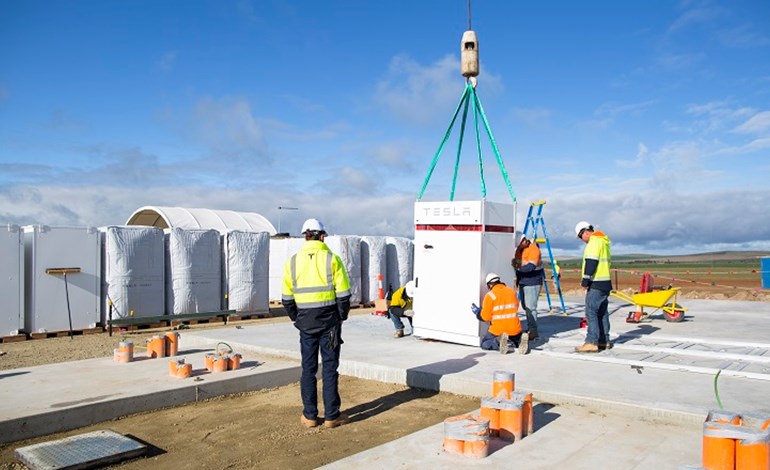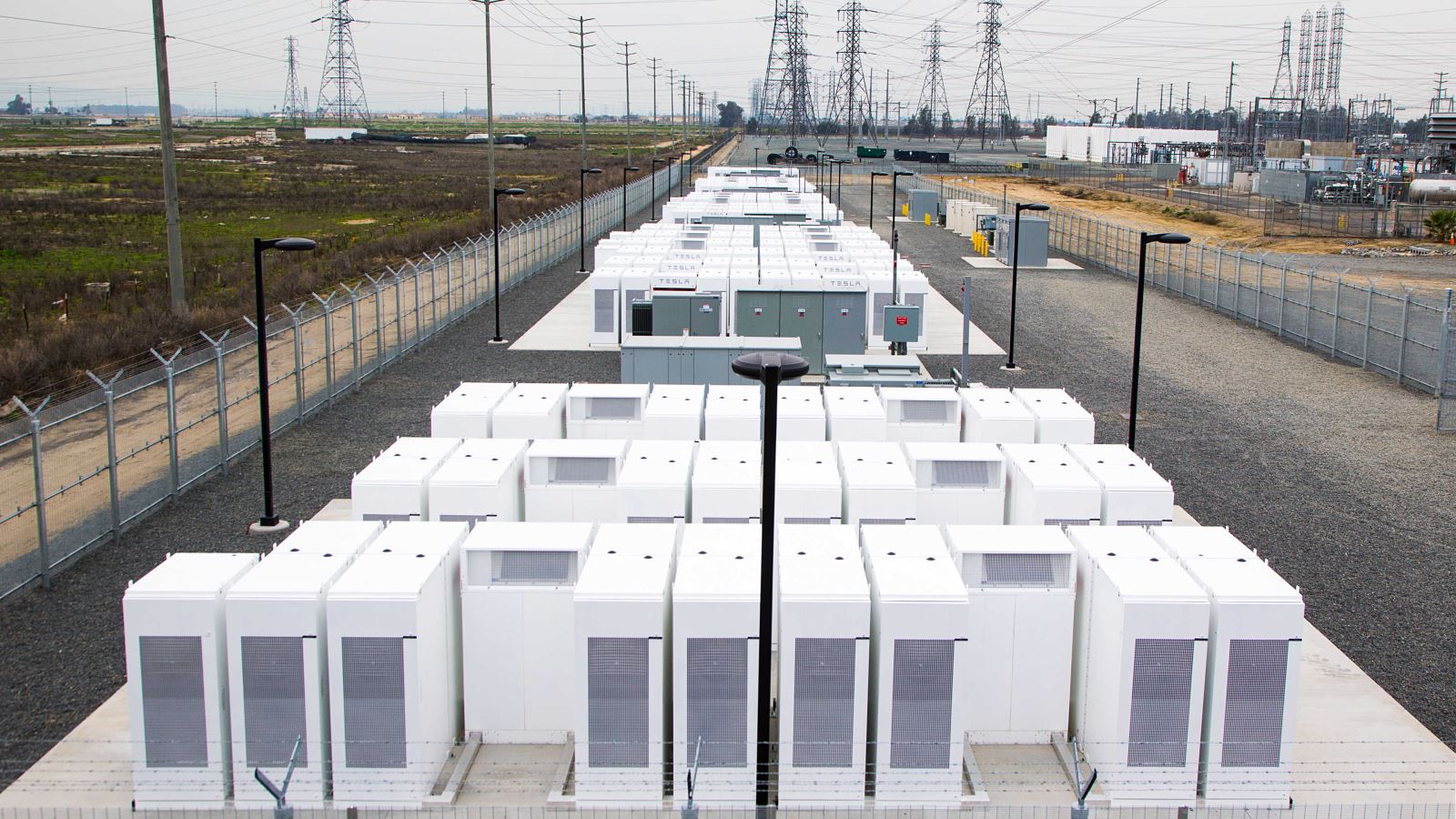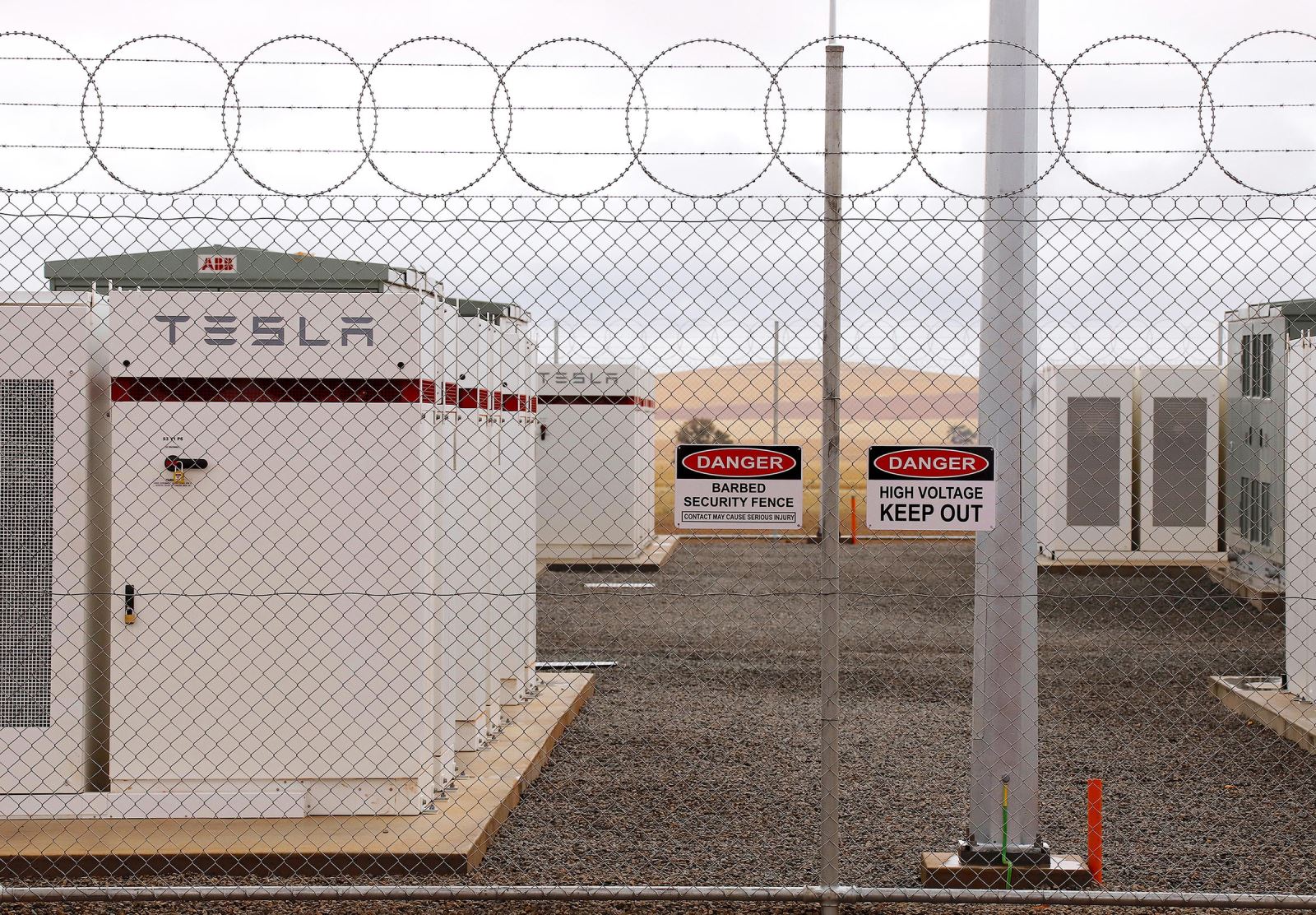The Hornsdale Power Reserve is a grid-connected battery complex co-located with the Hornsdale Wind Farm. It was built by Tesla, Inc. for a cost to Tesla of about US$50 million.

It is owned and operated by Neoen, with the government having the right to call on the stored power under certain circumstances. It provides a total of 129 megawatt-hours (460 GJ) of storage capable of discharge at 100 megawatts (130,000 hp) into the power grid. It provides several services to the grid:

• 70 MW running for 10 minutes (11.7 MWh) is contracted to the government to provide stability to the grid (grid services) and prevent load-shedding blackouts while other generators are started in the event of sudden drops in wind or other network issues. This service has reduced the cost of grid services to the Australian Energy Market Operator by 90%.

• 30 MW for 3 hours (90 MWh) is used by Neoen for load management to store energy when prices are low and sell it when demand is high.

The battery construction was completed and testing began on 25 November 2017. It was connected to the grid on 1 December 2017. Tesla had already begun construction, and some units were already operational by the time the contract was signed.

Due to the projects success and the areas demand for stable electricity output, the project was expanded by 50% in November 2019. The upgraded system is capable of discharge at 150 megawatts (200,000 hp) into the power grid. It is promoted as the largest lithium-ion battery in the world.

According to en.wikipedia











